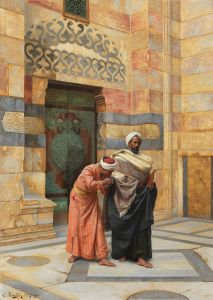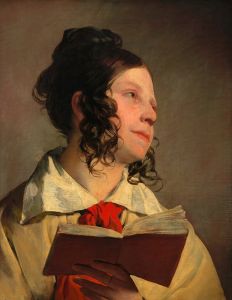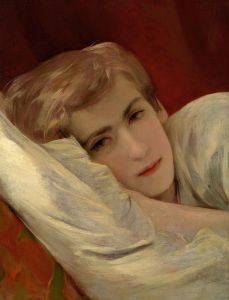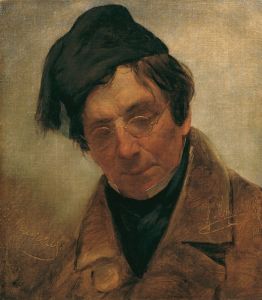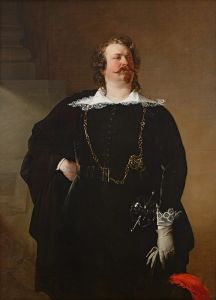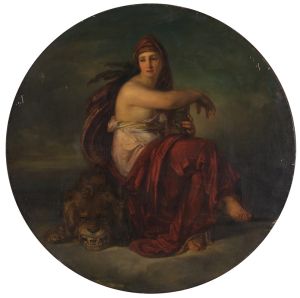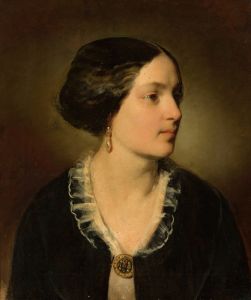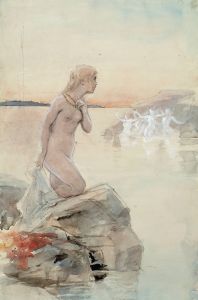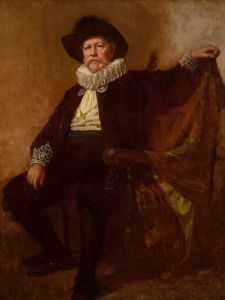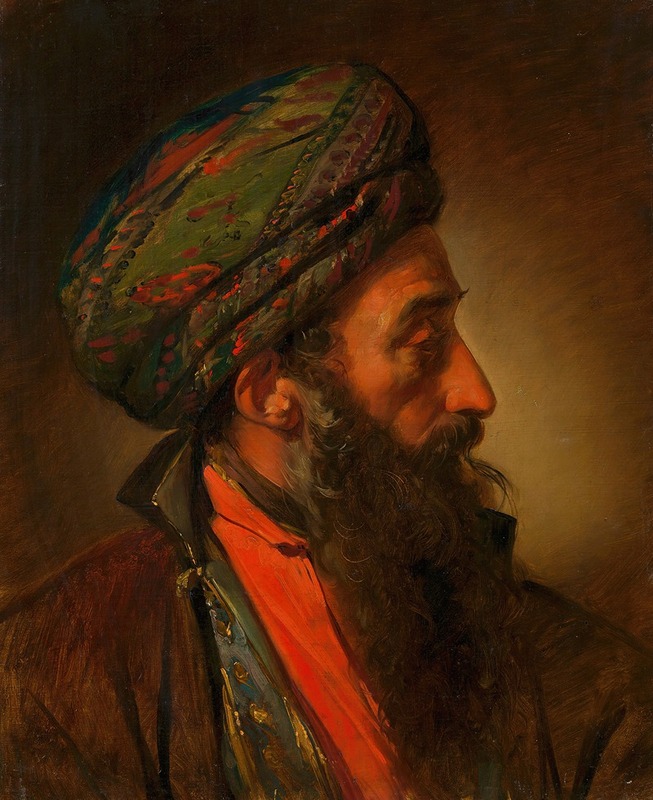
Ein Türke
A hand-painted replica of Friedrich von Amerling’s masterpiece Ein Türke, meticulously crafted by professional artists to capture the true essence of the original. Each piece is created with museum-quality canvas and rare mineral pigments, carefully painted by experienced artists with delicate brushstrokes and rich, layered colors to perfectly recreate the texture of the original artwork. Unlike machine-printed reproductions, this hand-painted version brings the painting to life, infused with the artist’s emotions and skill in every stroke. Whether for personal collection or home decoration, it instantly elevates the artistic atmosphere of any space.
Friedrich von Amerling was a prominent Austrian portrait painter in the 19th century, known for his detailed and realistic depictions of his subjects. One of his notable works is "Ein Türke," which translates to "A Turk." This painting is a fine example of Amerling's skill in capturing the essence and character of his subjects through meticulous attention to detail and a masterful use of light and shadow.
"Ein Türke" is an oil painting that showcases Amerling's ability to portray exotic subjects, which was a popular theme during the Orientalism movement in European art. Orientalism was characterized by the depiction of Eastern cultures, often romanticized and idealized by Western artists. This movement was influenced by the increased interaction between Europe and the Middle East during the 19th century, as well as a fascination with the perceived exoticism of Eastern societies.
In "Ein Türke," Amerling presents a portrait of a man dressed in traditional Turkish attire. The subject's clothing is rendered with great attention to detail, highlighting the rich textures and vibrant colors of the fabric. The use of light in the painting accentuates the folds and patterns of the garments, adding depth and realism to the portrayal. Amerling's skillful brushwork is evident in the intricate details of the subject's attire, which includes a turban and a richly embroidered robe.
The subject's expression is calm and composed, with a direct gaze that engages the viewer. Amerling's ability to capture the subtle nuances of facial expressions is one of the defining features of his portrait work. The background of the painting is kept relatively simple, ensuring that the focus remains on the subject. This compositional choice is typical of Amerling's style, where the emphasis is placed on the individual being portrayed.
Friedrich von Amerling was born in Vienna in 1803 and studied at the Academy of Fine Arts in Vienna, as well as in Prague and London. He became one of the most sought-after portrait painters of his time, receiving commissions from the Austrian aristocracy and other prominent figures. His work is characterized by its technical excellence and the ability to convey the personality and status of his subjects.
"Ein Türke" reflects the broader cultural and artistic trends of the 19th century, where European artists were increasingly interested in depicting subjects from different cultures. This interest was partly fueled by the expansion of European empires and the resulting exposure to new and diverse cultures. While Orientalist works like "Ein Türke" often reflect the Western perspective of the time, they also provide valuable insights into the cultural exchanges and perceptions of the era.
Today, Friedrich von Amerling's works, including "Ein Türke," are appreciated for their artistic merit and historical significance. They are housed in various museums and collections, where they continue to be studied and admired by art enthusiasts and historians alike. Amerling's legacy as a master portraitist endures, and his paintings remain a testament to his skill and the cultural milieu of 19th-century Europe.







